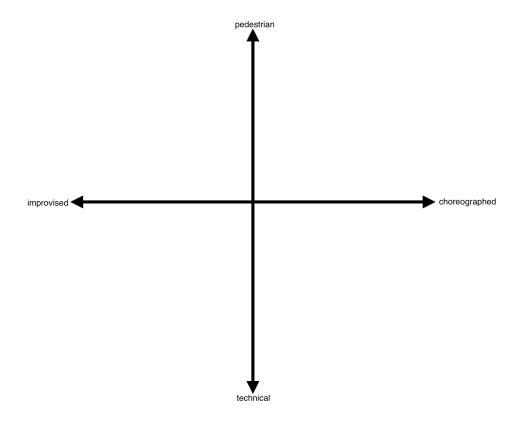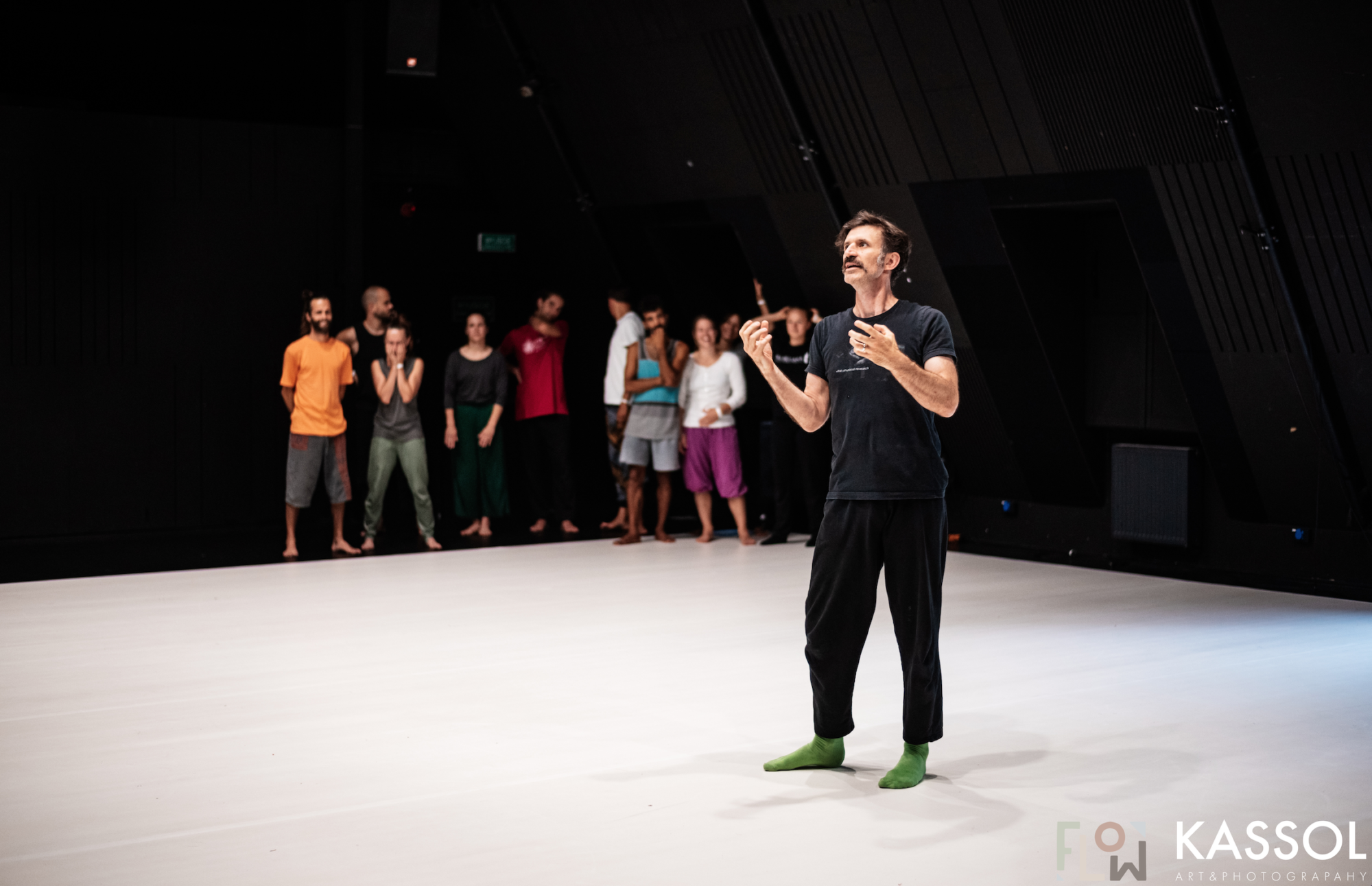In artworks, form is aesthetic insofar as it is an objective determination. Its locus is precisely where the work frees itself from being simply a product of subjectivity. – Theodor Adorno, Aesthetic Theory pg. 142
re-lease technique
As a choreographer, a dancer, a dance maker, and a performance theorist, I try to learn and understand as much as possible about my chosen field(s) of knowledge production. This knowledge accumulation process involves seeing a variety of performance, ranging from performances happening in black boxes and white boxes, high budget and low budget performance. It also entails reading a variety of books about visually oriented work – a history of ballet, Barthes, 7 Days in the Art World. So, yeah, me! I’m trying to expand my mind/range.
What particularly interests me, though, are the roots or building blocks of all this textual knowledge, i.e., words. And as I am a (stuck, maybe) a post modern dancer, I am interested in taking apart ideas to see what the inner workings of it are. But enough of this, let’s cut to the chase.
Release technique. What is it? Wikipedia, the compendium of all current truth and knowledge, defines it as “…an umbrella term that encompasses a variety of different corporeal practices that emphasize efficiency of movement in dance. Emphasis is placed on breath, skeletal alignment, joint articulation, ease of muscular tension and the use of gravity and momentum to facilitate movement.”
Fine, sounds good. We’ll take it. But let’s go deeper. Re-lease. The prefix of re- denotes something happening again, as in a re-petition of something. As in a rechaulking of your bathroom tile because it is so old and you don’t want the water to leak through to the walls and floor and cause the wood to rot.
And what is the lease that is happening again? Well, a lease, if you have ever rented an apartment or leased a car, is a contract. You sign your name on a piece of paper saying that you will pay so much a month to be able to store all your stuff (cue George Carlin) and cook, sleep, shower and shave in a place for a given period of time. For a car, it’s slightly different. I am not exactly sure because I have never leased a car. Why you sign a lease to rent an apartment, but sign a contract to rent a car, I don’t know.
Regardless, and not irregardless(!), a lease involves a contractual agreement between two parties for a specific amount of time. Contractual…what word is hidden in there? Contract. And what contracts? Muscles. Yes, muscles. So what do we have thus far?
Release is a repetition of a contract between two parties for a specific amount of time.
In the human body those two parties could be said to be the myosin fibers of the muscles that pull against each other when the nerve attached to that muscle receives a the signal to sign the contract. And as something can only contract again if it has been relaxed, release technique is not the “focus on the ease of muscular tension” but actually the opposite. It is the focus on the repeated engagement of muscles, or focus on the repeated creation of muscular tension.
Same coin, but the opposite side.
Teleological Posited Goal
“Investigation…uncovers what is going on independent of any consciousness in the objects in question, while on the other hand it discovers in them new combinations and new functional possibilities which need to be set in motion in order to realize the teleologically posited goal.” pg 11-12 The Ontology of Social Labor 3. Labour by Lukács.
This to me sounds like the experimentation phase of improvisation.
Also had the thought that improvisation has no teleologically posited goal. Unless it is scored and that is the teleologically posited goal.
Improvising the technically pedestrian choreography
“While improvisation initially offered Jones a reprieve from the demands of technical training…” – page 115 from I Want To Be Ready by Danielle Goldman.
This quote refers to the choreographer Bill T. Jones. While it may be true that improvisation did offer Jones a respite from the rigors of technical training, I find that this statement sets up, or rather is indicative of an old and antiquated antagonistic binary about improvisation and technique.
I would say that good improvisation requires technical training. The opposite of improvisation is choreography. And to do choreography doesn’t require technical training but merely memory.
A dancer’s relationship to time, i.e., improvisation or choreographed, has nothing to do with technical training. Choreography can be technical or not, improvisation can be technical or not. Though, I would posit that untechnical improvisation isn’t improvisation, but merely futzing about, regardless of how enthusiastic it is. Choreography, on the other hand, is merely remembering a sequence of events.
Technical, pedestrian, improvised, choreographic…one does not imply the other
Labor and Dance
the edited phrase
“Lukács emphasizes that in the course of history, the [critical], [theoretical] understanding of [dance] becomes more and more detached from the labor process, and less and less immediately bound to the immediate material constraints of the [dance].”
the original phrase
“Lukács emphasizes that in the course of history, the abstract, scientific understanding of reality becomes more and more detached from the labor process, and less and less immediately bound to the immediate material constraints of the real.” – Henry Staten
Interdisciplinary
“However, for interdisciplinarity to have any meaning, it must be based on competency in at least one discipline.” – B. Spatz
Visual Presentation
“I think that, maybe unlike a lot of other improvisational people, I’m very visually oriented and very interested in presentation.”
from Kent De Spain’s thesis quoting one of the dancers in his study
Copy
“What you copy and how you copy it shape your reputation as a dancer.” – C. V. Hill.
Futility of Life
‘Heidegger, Agamben, and Arendt as well are afraid that human life might be reduced to mere organic being, unredeemed from what Arendt calls the “essential futility” of life.’
from “The Origin of the Work of Art in Material Practice” by Henry Staten.
training and reflection
Training enables the dancer to be fully bodily engaged in a reflex and able to reflect on it simultaneously. In other words, unifying the body/mind, or rather not unifying as that implies a split, but existing as a whole.
